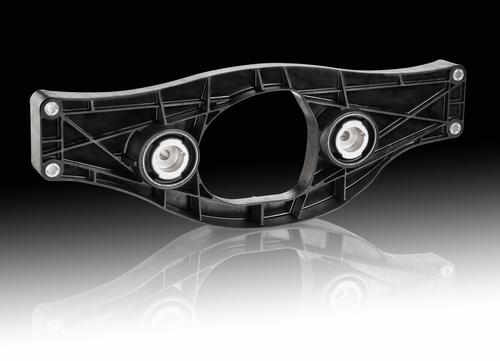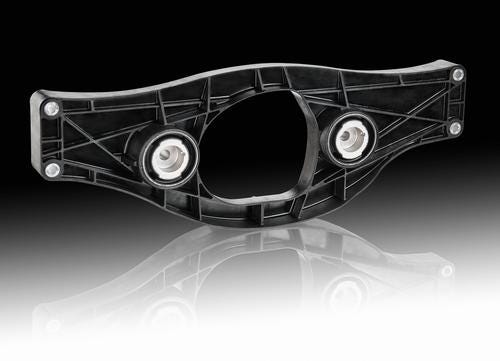July 20, 2015

The first-ever rear axle transmission crossbeam made of plastic instead of aluminum has been developed for Mercedes-Benz S-Class luxury sedans. Engineers at German chemical and plastics giant BASF and ContiTech Vibration Control designed the load-bearing structural component from BASF's Ultramid A3WG10 CR, a fiber-reinforced material that's optimized for withstanding high mechanical loads.

The Ultramid crossbeam design is already used in Mercedes-Benz all-wheel drive vehicle designs, except for high performance Mercedes-AMG cars. To do so, the crossbeam must meet high mechanical requirements for withstanding static and dynamic loads. It supports part of the torque transferred to the transmission from the engine and bears a constant share of the differential load.
MORE FROM DESIGN NEWS: BASF Reveals More BMWi3 Materials
In the S-Class cars, the plastic transmission crossbeam in the rear axle subframe replaces die-cast aluminum, saving 25% in weight while conforming to the latest crash requirements. It also has better acoustics as well as excellent mechanical properties, including at high temperatures. The specialty polyamide Ultramid A3WG10 CR grade, which is 50% glass fiber reinforced, displays optimum strength and rigidity, a low tendency to creep under constant loading, and withstands high bending torques.

BASF said its universal simulation Ultrasim tool, used heavily in designing components for the BMW i3, was a key part in achieving these results, especially in the early phases, to determine component size, optimize its geometry, and predict its behavior during injection molding and in operation. ContiTech Vibration Control also used Ultrasim’s Integrative Simulation to model the entire manufacturing chain, which helped define component geometry early on, reducing the number of prototypes needed.
MORE FROM DESIGN NEWS: 8 New Materials & Designs for Lightweighting Planes, Trucks and Cars
BASF made automotive materials history last year by supplying a different version of Ultramid to BMW for the BMW i3's front seat backrests, which were the first injection-molded, uncoated structural components made from polyamide with a visible surface used in a vehicle interior.
Ann R. Thryft is senior technology editor, materials & assembly, for Design News. She's been writing about manufacturing- and electronics-related technologies for 27 years, covering manufacturing materials & processes, alternative energy, and robotics. In the past, she's also written about machine vision and all kinds of communications.
About the Author(s)
You May Also Like



